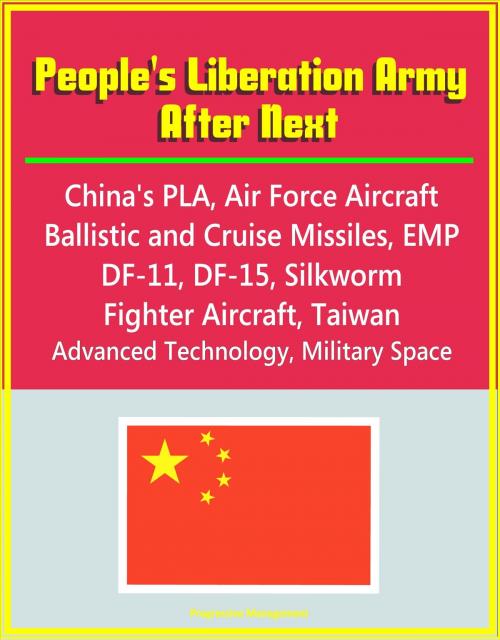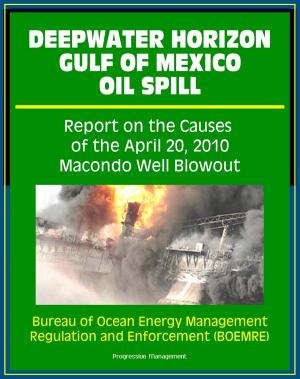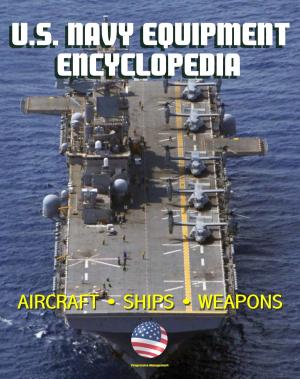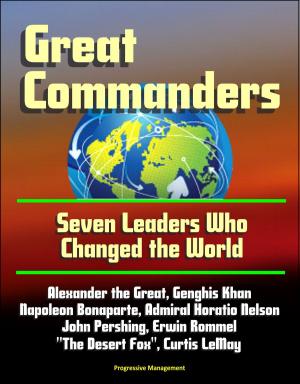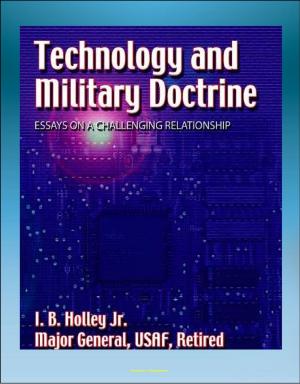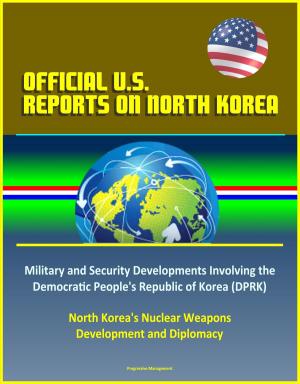People's Liberation Army After Next: China's PLA, Air Force Aircraft, Ballistic and Cruise Missiles, EMP, DF-11, DF-15, Silkworm, Fighter Aircraft, Taiwan, Advanced Technology, Military Space
Nonfiction, History, Asian, China| Author: | Progressive Management | ISBN: | 9781311856333 |
| Publisher: | Progressive Management | Publication: | March 20, 2014 |
| Imprint: | Smashwords Edition | Language: | English |
| Author: | Progressive Management |
| ISBN: | 9781311856333 |
| Publisher: | Progressive Management |
| Publication: | March 20, 2014 |
| Imprint: | Smashwords Edition |
| Language: | English |
An analytical schism has developed over differing assessments of China's military modernization. Underlying this debate are at least two key questions. First, will the ongoing China's People's Liberation Army (PLA) modernization provide China with significant offensive power projection and/or preemptive capability? If so, by when? Second, does the pace and success of China's military modernization constitute a threat to the United States and/or its friends and allies in the Asia-Pacific region?
At the source of these differing views on the pace and likely success of the PLA modernization is a lack of hard evidence, aggravated by a Chinese tendency to conceal both strengths and weaknesses. There are also analysts who are locked into positions on the PLA that the evidence seems unable to alter. Lack of information is often muddied by anecdotal knowledge, sometimes provided by Chinese interlocutors, that may be impossible to confirm or refute. In addition, a large body of conventional wisdom about the PLA has built up over time, which may inhibit fresh reassessment. Finally, peer comparisons of the PLA to the U.S. military, which is without equal in the post-Cold War period, may shape analysis of the PLA's capabilities and shortfalls. As a result, conclusions about China's military modernization often leave considerable room for interpretation on any side of an argument.
People's Liberation Army After Next - Introduction * Going Places or Running in Place? China's Efforts to Leverage Advanced Technologies for Military Use * PLA Logistics And Doctrine Reform, 1999-2009 * Potential Applications of PLA Information Warfare Capabilities to Critical Infrastructures * China's Military Space and Conventional Theater Missile Development: Implications for Security in the Taiwan Strait * PLA Air Force Operations and Modernization * The Kosovo War: Implications for Taiwan * China's Maritime Strategy
In addition, this unique collection of American military documents provides a special view of recent Chinese military and policy developments. Contents: China Shaping the Operational Environment - A Disciple on the Path of Deception and Influence * The "People" in the PLA: Recruitment, Training, and Education in China's 80-Year-Old Military * China's Maritime Quest * The PLA At Home and Abroad: Assessing The Operational Capabilities of China's Military * Arms Sales To Taiwan: Enjoy The Business While It Lasts * China's Role In The Stabilization Of Afghanistan * The Coming of Chinese Hawks * Turkey and China: Unlikely Strategic Partners. This ebook also includes the annual U.S. intelligence community worldwide threat assessment in Congressional testimony by Director of National Intelligence James R. Clapper Jr.
An analytical schism has developed over differing assessments of China's military modernization. Underlying this debate are at least two key questions. First, will the ongoing China's People's Liberation Army (PLA) modernization provide China with significant offensive power projection and/or preemptive capability? If so, by when? Second, does the pace and success of China's military modernization constitute a threat to the United States and/or its friends and allies in the Asia-Pacific region?
At the source of these differing views on the pace and likely success of the PLA modernization is a lack of hard evidence, aggravated by a Chinese tendency to conceal both strengths and weaknesses. There are also analysts who are locked into positions on the PLA that the evidence seems unable to alter. Lack of information is often muddied by anecdotal knowledge, sometimes provided by Chinese interlocutors, that may be impossible to confirm or refute. In addition, a large body of conventional wisdom about the PLA has built up over time, which may inhibit fresh reassessment. Finally, peer comparisons of the PLA to the U.S. military, which is without equal in the post-Cold War period, may shape analysis of the PLA's capabilities and shortfalls. As a result, conclusions about China's military modernization often leave considerable room for interpretation on any side of an argument.
People's Liberation Army After Next - Introduction * Going Places or Running in Place? China's Efforts to Leverage Advanced Technologies for Military Use * PLA Logistics And Doctrine Reform, 1999-2009 * Potential Applications of PLA Information Warfare Capabilities to Critical Infrastructures * China's Military Space and Conventional Theater Missile Development: Implications for Security in the Taiwan Strait * PLA Air Force Operations and Modernization * The Kosovo War: Implications for Taiwan * China's Maritime Strategy
In addition, this unique collection of American military documents provides a special view of recent Chinese military and policy developments. Contents: China Shaping the Operational Environment - A Disciple on the Path of Deception and Influence * The "People" in the PLA: Recruitment, Training, and Education in China's 80-Year-Old Military * China's Maritime Quest * The PLA At Home and Abroad: Assessing The Operational Capabilities of China's Military * Arms Sales To Taiwan: Enjoy The Business While It Lasts * China's Role In The Stabilization Of Afghanistan * The Coming of Chinese Hawks * Turkey and China: Unlikely Strategic Partners. This ebook also includes the annual U.S. intelligence community worldwide threat assessment in Congressional testimony by Director of National Intelligence James R. Clapper Jr.
